In today’s fast-paced world, more people are struggling with low energy, weight management issues, and a lack of muscle tone. If you’re trying to build strength, lose fat, or simply feel better throughout your day, a high protein diet plan might be the answer you’re looking for. Particularly for residents in the West Country, where natural living and wellness are becoming central to lifestyle choices, understanding the role of protein in daily nutrition is vital.
Protein isn’t just about building muscle—it plays a crucial role in nearly every function of your body, from producing hormones to supporting immunity. Your skin, hair, nails, internal organs, enzymes, and even immune cells are built with protein. As interest grows in natural and holistic approaches to wellness, many are turning to this macronutrient to improve energy levels, mental clarity, and overall vitality.
Despite its importance, protein is often under-consumed or misunderstood, especially in plant-based diets or calorie-restricted eating plans. Let’s dive deep to understand what protein really does for your body and how a high protein diet plan can work wonders for your overall health.
What is a High Protein Diet?
A high protein diet emphasizes increasing your intake of protein-rich foods while keeping fats and carbohydrates in balance. This doesn’t mean going zero-carb or eliminating fat; it means making protein the foundation of your meals for better satiety, metabolism, and muscle support.
High Protein Diet Macros:
- Protein: 1.2 to 2.0 grams per kilogram of body weight per day (varies based on age, sex, and activity level)
- Carbohydrates: Moderate to low depending on your goal (e.g., lower for fat loss, higher for athletes)
- Fats: Balanced to ensure hormone health, brain function, and absorption of fat-soluble vitamins
Why Protein?
Proteins are made up of amino acids—the essential building blocks for nearly every biological process. Your body uses them to build tissues, synthesize enzymes and hormones, repair damage, and transport nutrients. Since the body doesn’t store protein like it stores fat and carbohydrates, a regular daily supply is essential.
There are 20 amino acids, 9 of which are “essential,” meaning your body can’t make them—you must get them through food. High-quality or “complete” protein sources contain all 9 essential amino acids.
Benefits of a High Protein Diet
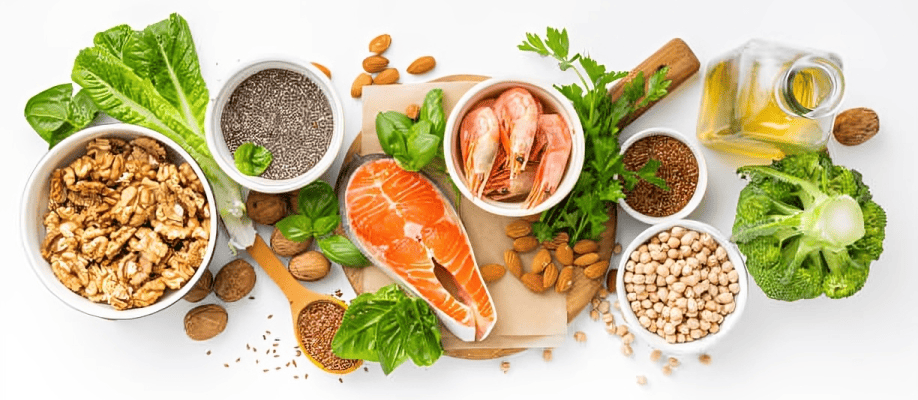
1. Promotes Weight Loss & Fat Burn
Protein is highly satiating, meaning it helps you feel full for longer. This reduces the urge to snack and makes it easier to create a caloric deficit without feeling deprived. Additionally, digesting protein burns more calories (due to a higher thermic effect) compared to carbs or fats.
“The thermic effect of protein can be up to 30%, meaning for every 100 calories of protein consumed, your body uses 20–30 calories just to digest it.”
A high protein intake helps preserve muscle mass during weight loss, ensuring that the majority of weight lost is from fat and not muscle.
2. Supports Muscle Growth and Repair
Protein provides the raw materials for muscle tissue repair and growth. For those involved in resistance training or sports, a higher protein intake is essential to support recovery, reduce muscle soreness, and promote gains in strength and muscle mass.
Even in older adults, increased protein can counteract age-related muscle loss (sarcopenia), supporting mobility and quality of life.
3. Improves Metabolic Health
High protein diets can help improve blood sugar control by reducing insulin spikes and increasing insulin sensitivity. This is particularly useful for individuals with prediabetes, metabolic syndrome, or Type 2 diabetes.
Protein also improves lipid profiles, contributing to healthier cholesterol and triglyceride levels.
4. Better Bone Health
Contrary to old beliefs that protein weakens bones, modern research has shown that higher protein intakes—especially from dairy and plant sources—can actually support bone density. Protein aids in calcium absorption and helps build the structural matrix of bones.
5. Enhanced Mood and Cognitive Function
Proteins are critical for the production of neurotransmitters like dopamine and serotonin. These chemicals influence mood, motivation, focus, and even sleep.
Amino acids such as tryptophan, tyrosine, and glutamine are precursors to mood-regulating hormones. Inadequate protein intake can contribute to depression, anxiety, brain fog, and irritability.
Common Causes and Symptoms of Protein Deficiency

Protein deficiency can develop subtly and is often overlooked. It’s more common in restrictive diets, poorly planned vegetarian or vegan diets, older adults, and individuals recovering from trauma, illness, or surgery.
Risk Factors:
- Low calorie or crash diets
- Plant-based diets lacking diversity
- Digestive issues (e.g., Crohn’s, IBS, low stomach acid)
- Eating disorders
- Chronic stress or illness
Symptoms You Shouldn’t Ignore:
- Chronic fatigue: Persistent tiredness not relieved by sleep
- Muscle weakness: Lack of strength, even with physical activity
- Hair thinning and brittle nails: Signs your body is prioritizing protein use elsewhere
- Edema: Swelling due to low albumin (a protein) in the blood
- Mood swings and brain fog: Poor neurotransmitter support
- Frequent illness: Weak immune defense
If you’re unsure, consider keeping a food diary or consulting a nutritionist to analyze your intake.
High Protein Foods to Include in Your Diet
Animal-Based Protein Sources:
- Chicken breast: Lean, versatile, and low in fat
- Eggs: Inexpensive, complete protein; yolks contain vital nutrients
- Greek yogurt: More protein than regular yogurt; also probiotic
- Tuna, salmon, and mackerel: High in protein and omega-3s for heart health
- Cottage cheese: High in casein protein, great for slow digestion
- Lean beef, turkey, lamb: Rich in iron, zinc, and vitamin B12
Plant-Based Protein Sources:
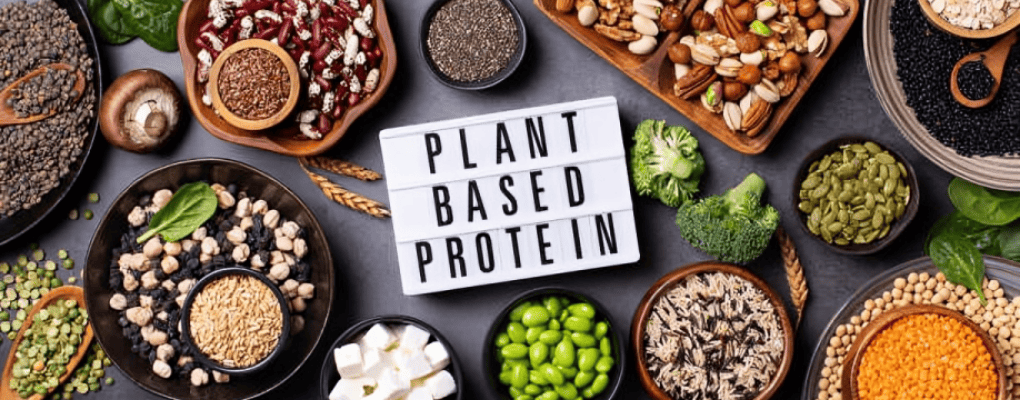
- Lentils: 18g protein per cooked cup; great in soups and curries
- Chickpeas and black beans: High in fiber and great for gut health
- Tofu and tempeh: Complete proteins from soy; versatile in cooking
- Chia, flax, hemp, and pumpkin seeds: Rich in protein and healthy fats
- Quinoa and amaranth: Ancient grains with all essential amino acids
- Almonds, walnuts, and peanuts: Energy-dense with additional minerals
Pro Tip: Mix plant proteins (e.g., rice and beans) to ensure you’re getting all essential amino acids if you’re vegetarian or vegan.
Building Your High Protein Diet Plan: Step-by-Step
You don’t need a complex plan to eat more protein. Just follow these easy steps to get started and see results — whether your goal is to lose fat, gain muscle, or feel more energetic.
1. Know How Much Protein You Need
Everyone needs a different amount of protein depending on how active they are.
Here’s a quick guide:
- Not very active → 1.0 to 1.2 grams of protein per kg of body weight
- Moderately active → 1.4 to 1.6g/kg
- Very active or trying to lose weight → 1.8 to 2.2g/kg
Example: If you weigh 70 kg and are fairly active, you’ll need around 105 grams of protein per day (70 × 1.5 = 105).
2. Spread Protein Throughout the Day
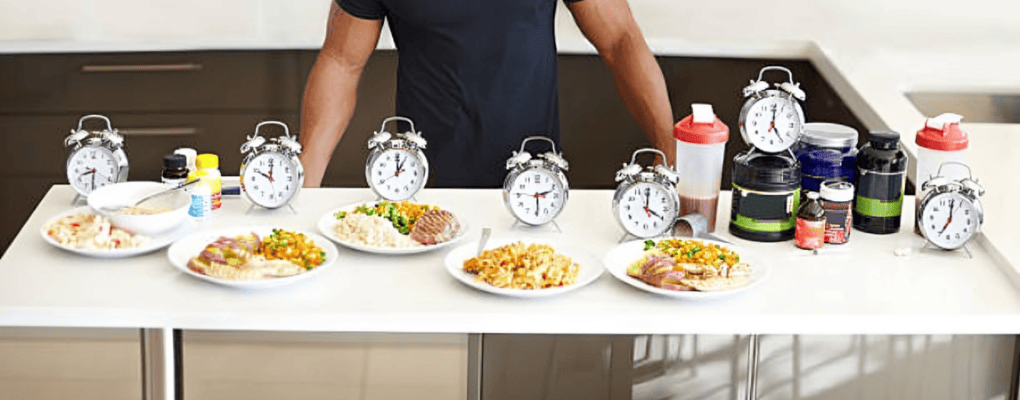
Don’t eat all your protein in one meal. Your body absorbs it better when it’s spaced out.
Here’s a simple way to do it:
- Breakfast: 20–30g
- Lunch: 25–35g
- Dinner: 25–35g
- Snacks: 10–15g each
Tip: Try to include some protein in every meal and snack — even something simple like eggs, yogurt, or nuts.
3. Mix It Up (Use Different Protein Sources)
Eating only chicken and eggs every day can get boring — and may not give your body everything it needs.

Use a mix of:
Animal proteins:
- Chicken, eggs, fish, Greek yogurt, cheese, lean meat
Plant proteins:
- Lentils, beans, tofu, quinoa, nuts, seeds
Vegetarians or vegans should combine different foods (like rice + lentils) to get all the essential amino acids.
4. Don’t Overdo It
Eating more protein than your body needs won’t give you faster results — and it may make you feel bloated or tired.
Stick to your daily goal. Your body can only use a certain amount of protein at one time.
Helpful guide:
- A palm-sized piece of meat or fish = ~25g protein
- 1 cup of cooked beans or lentils = ~15g
- 1 scoop of protein powder = ~20–25g
5. Plan Ahead to Make It Easy
Busy day? No time to cook? Prepping your meals can save time and keep you on track.
Here’s how:
- Cook a few portions of chicken, lentils, tofu, or eggs at once
- Store them in containers so meals are ready to grab
- Pack high-protein snacks like boiled eggs, trail mix, or protein bars
Planning ahead = fewer excuses + better choices = better results
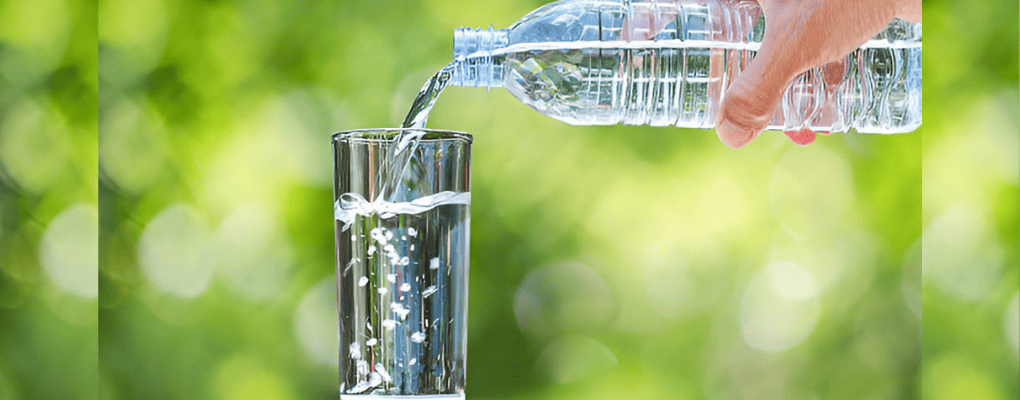
6. Drink More Water
When you eat more protein, your body makes more waste (from breaking it down). Your kidneys need more water to flush it out.
Simple rule:
Drink at least 2.5 to 3 liters of water daily, especially if you’re active or live in a hot place.
Staying hydrated also helps with digestion and prevents bloating or constipation.
Final Tip:
Start small. Add one high-protein food to each meal. Over time, you’ll feel stronger, fuller, and more energetic — without feeling restricted or confused.
Sample High Protein Meal Plan:
Breakfast: 3 scrambled eggs with spinach + 1 slice whole-grain toast + Greek yogurt smoothie with whey protein and chia seeds
Snack: Apple slices with 2 tablespoons peanut butter or a boiled egg + almonds
Lunch: Grilled chicken quinoa bowl with roasted veggies, avocado, and tahini dressing
Snack: Cottage cheese with berries and pumpkin seeds or a protein bar
Dinner: Baked salmon with sweet potato mash and steamed green beans
Optional Add-on: Herbal teas or natural adaptogens like ashwagandha (for stress) or ginseng (for stamina) based on tradition and moderate evidence
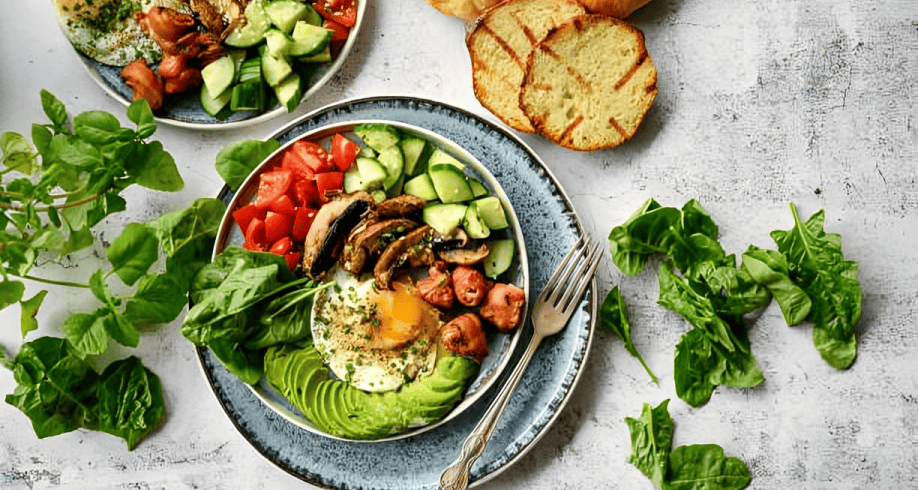
Practical Tips for High Protein Success
1. Start Your Day with Protein
Breakfast is the perfect time to set the tone for your day. Skip sugary cereals or toast, which can spike blood sugar and leave you hungry soon after. Instead, go for protein-packed options like scrambled eggs, Greek yogurt with seeds and berries, or a smoothie with protein powder and nut butter. These choices help you stay full longer, reduce cravings, and support steady energy levels.
2. Keep Protein Snacks Handy
On busy days, it’s easy to reach for chips or sweets. Having protein-rich snacks ready—like boiled eggs, roasted chickpeas, or low-sugar protein bars—makes it easier to stay on track. Portable and fuss-free, these options help curb hunger and keep your goals in check wherever you are.
3. Experiment with New Recipes
High protein doesn’t have to mean boring. Mix things up with lentil pasta, tofu stir-fries, or protein-rich treats like black bean brownies. Try protein pancakes or overnight oats with added powder. Making your meals enjoyable increases the chances you’ll stick to your plan.
4. Add Flavor with Herbs & Spices
Healthy eating should never feel bland. Use garlic, turmeric, cumin, basil, or rosemary to add depth and boost nutrition. Spice blends like curry or za’atar can instantly upgrade simple meals without added calories or sugar.
5. Track Your Intake Mindfully
It’s easy to misjudge how much protein you’re getting. Use apps like MyFitnessPal or Cronometer to keep tabs on your intake. Occasional tracking builds awareness and helps you adjust portions and food choices based on actual needs—not guesses.
6. Don’t Forget the Fiber
A protein-rich diet low in fiber can lead to bloating or sluggish digestion. Balance your plate with vegetables, legumes, seeds, and whole grains. Drink enough water to help fiber work properly and keep your gut healthy.

Frequently Asked Questions (FAQs)
Q1: How do I calculate my protein requirement?
A: Multiply your body weight in kilograms by 1.2–2.0. Use the lower end for sedentary lifestyles and the higher end for active individuals or athletes. A 70kg person doing moderate exercise should aim for around 105g protein daily.
Q2: Can children or seniors follow a high protein diet?
A: Yes, and they may benefit greatly. Seniors need more protein to maintain muscle mass, while children require it for growth. Ensure balanced intake and consult a pediatrician or geriatric nutritionist for personalized needs.
Q3: Are high protein diets safe long term?
A: Yes, for healthy individuals. Just ensure it’s well-rounded with sufficient water, fiber, and micronutrients. If you have kidney disease or other metabolic conditions, consult your doctor first.
Q4: What protein powders are best?
A: Whey is excellent for fast absorption; casein digests slowly and is ideal before bed. Plant-based options like pea, hemp, or brown rice are great for vegans or lactose-sensitive individuals.
Q5: Can I lose weight on a high protein vegetarian diet?
A: Absolutely. Focus on legumes, soy, quinoa, seeds, nuts, and supplement with plant-based protein powders if needed. Watch your carb and fat intake to stay in a caloric deficit.
Q6: Will too much protein harm my kidneys?
A: Not in healthy individuals. The myth that high-protein diets damage kidneys is only relevant for people with pre-existing kidney conditions. For most, protein is not only safe—it’s essential.
In A Nutshell
A high protein diet plan is more than just a fitness trend—it’s a science-backed lifestyle approach that supports fat loss, muscle gain, hormonal health, and mental well-being. Whether you’re young or aging, sedentary or athletic, meat-loving or plant-based, protein should be a cornerstone of your nutrition.
Incorporating more protein doesn’t have to mean drastic changes. Small, consistent upgrades—like switching cereal for eggs or adding legumes to your salad—can make a big impact over time.
If you’re in the West Country and looking to live a naturally energized, health-forward life, now’s the time to embrace protein-rich living.
Ready to take the first step?
Pick one meal today and make it protein-packed. Explore our other articles, meal plans, and recipes to continue your journey toward optimal health naturally.

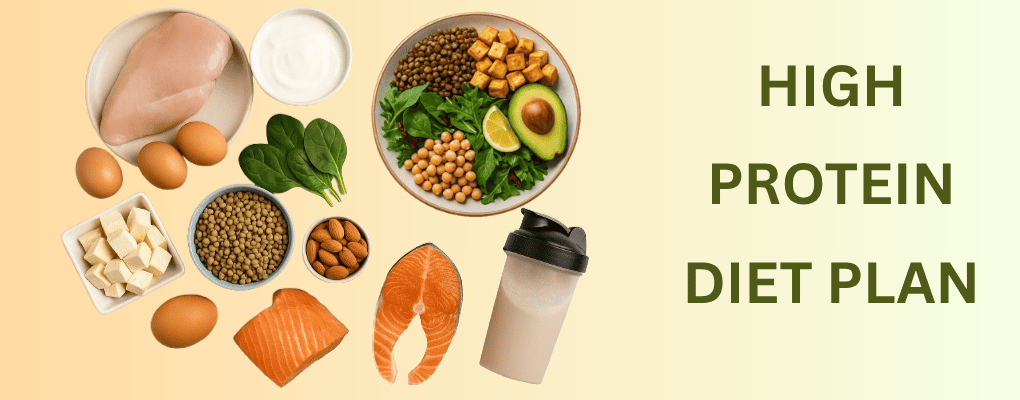

4 Responses
It’s refreshing to see protein framed as more than just a gym nutrient. I’ve personally noticed better focus and fewer energy crashes since increasing my protein intake—especially when I swap processed snacks for whole food sources.
Good article! I went high protein last year and made the mistake of ignoring hydration — major fatigue hit me. Glad this blog mentioned the importance of balance and gradual change.
Just getting into weight training and had no clue how much protein I really needed. The step-by-step plan made it a lot easier to structure my meals without overthinking.
I’ve tried every “high protein” trend out there, but this post actually explained how to balance it instead of just eating chicken all day. Finally something practical and not fad-driven.